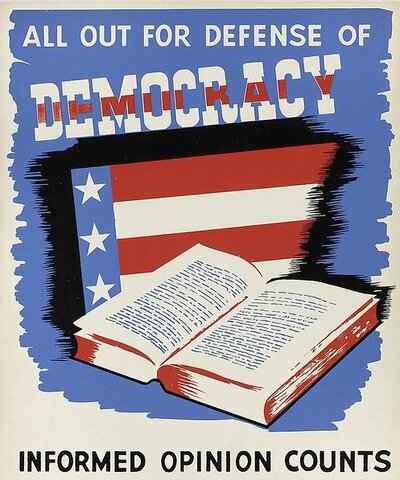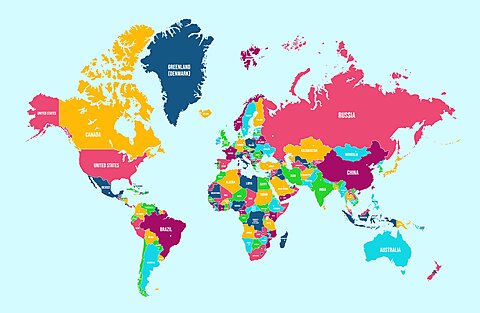Among the rampant absurdities about immigration that spread from both the obscure and prominent corners of the Internet, the idea that the Biden administration was “importing” voters from abroad to help Kamala Harris win was simultaneously the silliest and the most common. Setting aside the conspiracy theories, the 2024 election provides the best evidence to date that Republicans can compete when immigration is high.
For reasons I can’t appreciate, many Republicans act as if they cannot do well if there are many immigrants in the electorate. Vice President-elect JD Vance said recently that immigration would permanently tilt the balance of power in favor of the Democrats. He said this even as his running mate was poised to make historic gains among Hispanic voters, many of whom are immigrants or children of immigrants. Regardless, the historical evidence shows that GOP performance improves with more immigration, so there are no data behind Vance’s fears.
The immigrant share isn’t associated with a stronger performance of either party in presidential elections. But there is a relationship between stronger Republican performance and a larger immigrant share of the US population. The Democrats controlled both houses of Congress for 83 percent of the years from 1935 to 1994 when the immigrant share of the US population was below 10 percent. Since 1995, Democrats have not controlled either house of Congress 53 percent of the time.
Republicans have performed much better during the high immigration periods of US history. Why? Not only do new populations assimilate, but the more Democrats compete and cater to the votes of naturalized citizens, the more US-born voters drift toward Republicans. An additional factor is that the immigrant share has been high when the unionized share of the labor force has been low, possibly because immigrants undermine unionization.
Unions were historically the base of the Democratic Party until recently. Any benefit from naturalized citizens did not outweigh losses among the unionized population.
Does this mean that Democrats needed to be even more anti-immigrant to win? That was Kamala Harris’s assessment of the situation. But my view is that her (and Biden’s) immigration gambit backfired. Polls show that from 2019 to 2023 the share of voters saying immigration should be decreased grew just 6 points. Even though illegal immigration fell sharply in 2024, the share of Americans saying that immigration should be restricted suddenly jumped 14 points in June 2024.
Here’s what happened: Harris and Biden endorsed a bill to “shut the border” in 2024, which they reiterated as their position repeatedly before finally acting unilaterally to ban asylum in June 2024. It’s no surprise that when the heads of both parties endorse immigration restrictions, more people move toward that position. We have seen similar swings on other issues, like trade, when the head of a party (Trump) suddenly endorses a different view. Rather than neutralizing Trump’s immigration attacks, Harris’s flip validated them.
As I explained in this short documentary about Harris and immigration, voters were told by Harris and Biden that we should want Trump-style policies at the border. But if Trump’s policies are what we need, why would voters elect Harris instead of Trump himself? It was such a poor strategy that Harris had to stammer her way through interviews on the topic and then try to distract Trump about crowd sizes in the debate to avoid letting him make the point.
Even if immigration was never going to be a strong point for Harris, she should have tried to attack Trump on his weak points to make it less of a liability. As I wrote for NBC in August, Harris had lines of attack against Trump, but never used them:
I have written extensively about how his policies led to less security, more evasions of the Border Patrol, more criminals crossing, and more criminals being released. She never made any effort to criticize his record at all.
When asked why she supported banning prosecutions for illegal entry, she refused to mention she did so only because Trump was using the authority to separate little children from their parents—a policy that was not popular with Americans.
She should have mentioned that family separation prosecutions were causing sex offenders to go unprosecuted.
Harris should have done more to differentiate herself from other Democrats who support New York City’s insane shelter policy and release policy for criminal noncitizens.
Harris and Biden refused to make a positive economic case for any immigration. Harris cited economic analyses saying that her administration would accumulate less debt or more economic growth but never mentioned that this was largely because those models assumed higher immigration rates. The Congressional Budget Office concluded in July 2024 that the recent immigration will increase US GDP by $9 trillion and reduce deficits by $1 trillion over a decade. But since Harris had committed to her anti-immigration strategy, she could never attack Trump’s mass deportation plans as bad economics.
Of course, President Biden did not go nearly far enough in encouraging legal immigration. An arbitrary limit on legal immigration is the root cause of illegal immigration and border chaos. Harris was never in charge of immigration policy. But when asked what she would have done differently from Biden, rather than saying, “I can’t think of anything,” she should have said, “I would have required people to come legally and created clear ways for them to do so from Day 1 of my administration.” As we at Cato have often said, people want order at the border.
Harris likely would have lost no matter what she did or said about immigration. But the fact that there was an alternative approach out there should give commentators pause before suggesting she needed to lead with even more anti-immigration messaging.
Both parties can compete in a country with more immigrants, but no matter the politics, immigration remains important for the United States and the world. Congress and Donald Trump should focus on making immigration legal and orderly rather than on cutting it.









